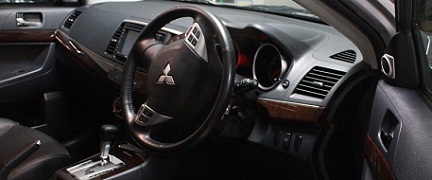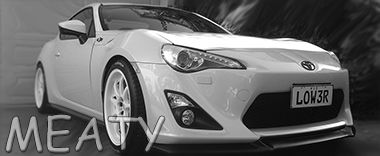I have ripped this as the simplest way to understand ABS: to put it bluntly, it doesnt matter what brakes you use, its the speed off acceleration and deceleration of each individual wheel that matters to the ABS system.
There are four main components to an ABS system:
* Speed sensors
* Pump
* Valves
* Controller
Speed Sensors
The anti-lock braking system needs some way of knowing when a wheel is about to lock up. The speed sensors, which are located at each wheel, or in some cases in the differential, provide this information.
Valves
There is a valve in the brake line of each brake controlled by the ABS. On some systems, the valve has three positions:
* In position one, the valve is open; pressure from the master cylinder is passed right through to the brake.
* In position two, the valve blocks the line, isolating that brake from the master cylinder. This prevents the pressure from rising further should the driver push the brake pedal harder.
*In position three, the valve releases some of the pressure from the brake.
Pump
Since the valve is able to release pressure from the brakes, there has to be some way to put that pressure back. That is what the pump does; when a valve reduces the pressure in a line, the pump is there to get the pressure back up.
Controller
The controller is a computer in the car. It watches the speed sensors and controls the valves.
There are different variations and control algorithms for ABS systems.Thios is how one of the simpler systems works.
The controller monitors the speed sensors at all times. It is looking for decelerations in the wheel that are out of the ordinary. Right before a wheel locks up, it will experience a rapid deceleration. If left unchecked, the wheel would stop much more quickly than any car could. It might take a car five seconds to stop from 60 mph (96.6 kph) under ideal conditions, but a wheel that locks up could stop spinning in less than a second.
The ABS controller knows that such a rapid deceleration is impossible, so it reduces the pressure to that brake until it sees an acceleration, then it increases the pressure until it sees the deceleration again. It can do this very quickly, before the tire can actually significantly change speed. The result is that the tire slows down at the same rate as the car, with the brakes keeping the tires very near the point at which they will start to lock up. This gives the system maximum braking power.
When the ABS system is in operation you will feel a pulsing in the brake pedal; this comes from the rapid opening and closing of the valves. Some ABS systems can cycle up to 15 times per second.
Anti-Lock Brake Types
Anti-lock braking systems use different schemes depending on the type of brakes in use. We will refer to them by the number of channels -- that is, how many valves that are individually controlled -- and the number of speed sensors.
Four-channel, four-sensor ABS
This is the best scheme. There is a speed sensor on all four wheels and a separate valve for all four wheels. With this setup, the controller monitors each wheel individually to make sure it is achieving maximum braking force.
Three-channel, three-sensor ABS
This scheme, commonly found on pickup trucks with four-wheel ABS, has a speed sensor and a valve for each of the front wheels, with one valve and one sensor for both rear wheels. The speed sensor for the rear wheels is located in the rear axle.
This system provides individual control of the front wheels, so they can both achieve maximum braking force. The rear wheels, however, are monitored together; they both have to start to lock up before the ABS will activate on the rear. With this system, it is possible that one of the rear wheels will lock during a stop, reducing brake effectiveness.
One-channel, one-sensor ABS
This system is commonly found on pickup trucks with rear-wheel ABS. It has one valve, which controls both rear wheels, and one speed sensor, located in the rear axle.
This system operates the same as the rear end of a three-channel system. The rear wheels are monitored together and they both have to start to lock up before the ABS kicks in. In this system it is also possible that one of the rear wheels will lock, reducing brake effectiveness.
This system is easy to identify. Usually there will be one brake line going through a T-fitting to both rear wheels. You can locate the speed sensor by looking for an electrical connection near the differential on the rear-axle housing.
More:
http://auto.howstuffworks.com/auto-parts/brakes/brake-types/anti-lock-brake.htm






